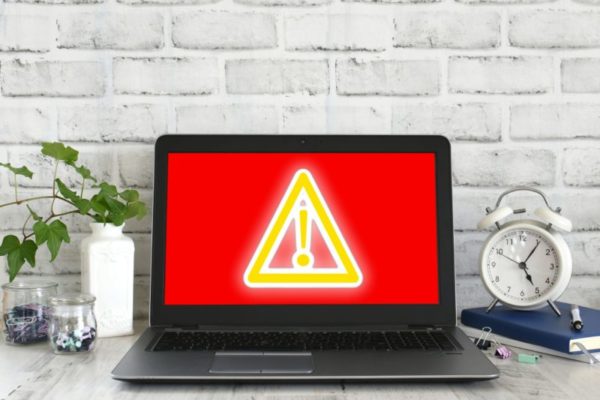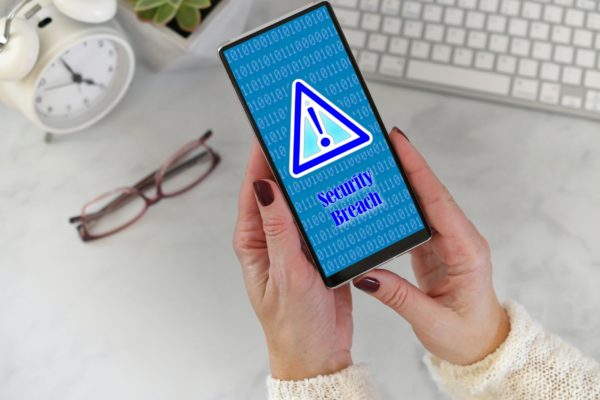Maintaining and fostering cybersecurity is constant in any business environment, and continuous monitoring is all but required to mitigate cybersecurity risks.
Cybersecurity risks are the greatest threat to data security, and an attack by a bad actor can have resounding consequences. A cyberattack can have an international impact by disrupting the flow of essential products or data leaks. Furthermore, that puts both internal and external stakeholders within an organization at risk.
When it comes to cybersecurity risks that can have resounding consequences, criminals are increasingly using ransomware attacks to bypass detection processes. They interrupt a business’ core functions until someone pays a hefty ransom.
Unfortunately, according to a March 2023 Forbes article, ransomware attacks are increasing and affecting the financial and reputational costs to organizations across multiple industries.
- What is NIST Cybersecurity Framework?
- Does My Business Have to Follow the NIST Cybersecurity Framework?
- Understanding the NIST Cybersecurity Framework
- The NIST Cybersecurity Framework Core
- How to Best Use the NIST to Manage Cybersecurity Risks
- Partner with an Expert in Cybersecurity Management
Ransomware Attacks on the Rise – Prepare and Secure Your Organization
Currently, ransomware attacks (primarily via phishing activities) are the top threats to the public and private sectors. Additionally, in 2022, 76% of organizations were targeted by a ransomware attack. Only 50% of these organizations managed to retrieve their data after paying the ransom. Over 66% of respondents reported having had multiple, isolated infections that affected the company’s operations and identity management after the detected cybersecurity events occurred.
However, when mitigating your vulnerability to cybersecurity incidents, you can enlist ample protective measures and security policies to make smarter risk management decisions. A risk management strategy is essential for any private or public organization with ties to the broader community, like corporations, law enforcement agencies, and any company that could potentially contribute to supply chain risks.
Before a company can craft a risk management strategy, it’s imperative to have an organizational understanding of the cybersecurity risks involved. Therefore, the best way to conduct risk assessments and administer appropriate safeguards.
Thankfully, a framework for proactive cybersecurity activities, known as the NIST Cybersecurity Framework, exists to help manage cybersecurity risks for companies across all industries.

What is the NIST Cybersecurity Framework?
The NIST Cybersecurity Framework (NIST CSF) is a comprehensive set of guidelines for organizations to conduct risk assessments and mitigate organizational cybersecurity risks.
First published by the US National Institute of Standards and Technology (NIST) in 2014, the NIST CSF serves several cybersecurity functions, which include enhancing security awareness. However, the NIST assists in creating a risk assessment and security program and allows companies of all sizes to make better operational risk decisions, from security controls to recovery planning.
The NIST framework is instrumental in understanding risk tolerance and conducting risk assessments. Therefore, the framework was designed to mitigate potentially catastrophic cybersecurity risks, like in the critical infrastructure sectors. The NIST cybersecurity framework can assist any organization’s risk strategy inside and out, from supply chain risk management to federal information systems.
How Was the NIST Cybersecurity Framework Developed?
The National Institute of Standards engaged closely with internal and external stakeholders in the 2014 development of the NIST Framework, and all subsequent updates to the NIST framework. Tens of thousands of internal and external stakeholders from diverse parts of the industry, academia, and government have participated in the development of the NIST Cybersecurity Framework versions 1.0 and 1.1.
Furthermore, these details, like response planning, optimal cybersecurity measures, and asset management, are ever-changing, depending on developing security standards.
Does My Business Have to Follow the NIST Cybersecurity Framework?
The NIST framework was designed to be voluntarily implemented by most organizations in order to understand their risk tolerances. It was also used to identify cybersecurity events that may impact normal operations, and support risk decisions regarding overall risk management. However, some legal and regulatory requirements may exist for government agencies or organizations that conduct appropriate activities in the critical infrastructure realm or perform other instrumental functions.

Does the NIST Cybersecurity Framework Benefit Organizations that Already Have Cybersecurity Activities in Place?
As detailed in the NIST cybersecurity framework summary, the NIST Cybersecurity Framework is a continual reference and resource for all organizations, even those already prepared for cybersecurity events. Also, this includes businesses that have implemented appropriate safeguards as part of their cybersecurity program and response planning to cybersecurity incidents.
While a company may have already taken steps to protect functions in a business environment, remember that continuous monitoring is necessary for security. Cybersecurity risks like ransomware attacks are always growing in sophistication. Therefore, a routine risk assessment can help determine if your current technical security solutions are effective against cybersecurity incidents is all but required to keep the core functions of your business environment running smoothly.
The National Institute of Standards Cybersecurity Framework is a continual resource for cybersecurity awareness education. These are the guidelines on identity management, how to inform cybersecurity roles, and how to enhance your network security and other vulnerable aspects of your business environment.
Understanding the NIST Cybersecurity Framework
The NIST Cybersecurity Framework is divided into three components: Core, Profile, and Tiers.
- The Framework Core contains a collection of appropriate activities, cybersecurity outcomes, and references about aspects and approaches to cybersecurity. (More on the Framework Core below.)
- The NIST Framework Implementation Tiers are used by an organization to clarify for itself and its partners how it views cybersecurity risk and the degree of its asset management, risk assessment, and overall approach to risk management decisions.
- The Framework Profile lists the potential cybersecurity incident outcomes an organization has chosen from the categories and subcategories, based on its protective technology needs and risk assessment.

The NIST Cybersecurity Framework Core
The Framework Core is the first step for an organizational understanding of the NIST Cybersecurity Framework.
The Framework Core is a set of cybersecurity activities, desired outcomes, and applicable risk management references that are common across critical infrastructure services and sectors. However, it can be applied to all businesses to protect against cybersecurity events.
The Framework Core consists of three parts: Core Functions, Categories, and Subcategories. The Framework Core includes five high level functions: Identify, Protect, Detect, Respond, and Recover. These five functions apply to cybersecurity risk management, and data security at large, in the event of a detrimental cybersecurity incident.
The following purposes are the core functions and categories, and their unique identifiers and definitions, as stated in the NIST cybersecurity framework document.
Identify
Identify refers to developing the organizational understanding to manage cybersecurity risks to a company’s systems, assets, data, and capabilities.
- Asset Management: The data, personnel, devices, systems, and facilities that enable the organization to function are identified and managed in relation to the business operation’s objectives and the organization’s risk management strategy.
- Business Environment: The organization’s mission, objectives, internal and external stakeholders, and appropriate activities are understood and prioritized. This data then informs cybersecurity roles, identity management, and risk management decisions.
- Governance: The policies and processes to manage and monitor the organization’s regulatory, legal, environmental, and operational requirements are understood and inform the cybersecurity risk management decisions.
- Risk Assessment: The organization understands the cybersecurity risk to operations, asset management, and individuals.
- Risk Management Strategy: The organization’s priorities, constraints, and risk tolerances are established and used to support operational risk decisions.
- Supply Chain Risk Management: The organization’s priorities and cybersecurity risk tolerances are established and used to support risk management decisions. Moreover, when it comes to supply chain risk management, the organization has the processes to identify, assess and manage supply chain risks, and other potential risks.
Protect
Protect refers to developing and implementing the appropriate safeguards to ensure the delivery of critical infrastructure services. However, it can also be helpful to manage cybersecurity risks of all varieties.
- Access Control: Access control to assets and associated facilities is limited to authorized users, processes, or devices, and to authorized appropriate activities and transactions. Access control is essential in supply chain risk management, critical infrastructure cybersecurity, and any generalized risk management strategy, as access control can protect the functions of your organization from the inside out. (Note: The majority of detected cybersecurity incidents stem from phishing and finding access to a company’s innerworkings, so access control and identity management are essential.)
- Awareness and Training: The organization’s personnel and partners are provided cybersecurity awareness education and can tackle their information security related duties and responsibilities.
- Data Security: All information related to data security is consistent with the organization’s risk strategy to protect information confidentiality, integrity, and availability. Like access control, data security is an imperative part of the Framework Core.
- Information Protection Processes and Procedures: Cybersecurity polices, processes, and procedures are maintained and used to identify the management and protection of information systems and assets.
- Maintenance: Maintenance and repairs of industrial control and information system components, such as critical infrastructure services, is maintained.
- Protective Technology: Technical security solutions are managed to ensure the security and resilience of systems and assets, consistent with related policies, procedures, and agreements. This can entail continuous security monitoring, routine response planning, or reviewing cybersecurity outcomes in the case of a detected cybersecurity incident. Protective technology is another instrumental component of the core functions, as without protective technology, a company’s vulnerability to new and dangerous cybersecurity activities and cybersecurity events naturally increases.
Detect
Detect refers to developing and implementing the appropriate activities to identify the occurrence of cybersecurity incidents or events.
- Anomalies and Events: non-appropriate activities are detected in a timely manner and the potential impact of unsavory cybersecurity activities is understood.
- Security Continuous Monitoring: The information system and assets undergo continuous monitoring to identify cybersecurity events and verify the effectiveness of risk management and protective measures.
- Detection Processes: Detection processes and procedures undergo continuous monitoring, maintenance, and testing to ensure timely and adequate awareness of cybersecurity activities.

Respond
Respond refers to the development and implementation of the appropriate activities to take action regarding a detected cybersecurity event.
- Response Planning: Detailed response planning is executed and maintained, to ensure timely response to detected cybersecurity events in the critical infrastructure cybersecurity realm, and other industries.
- Communications: The appropriate activities regarding response planning and execution are coordinated with internal and external stakeholders, including law enforcement agencies as needed.
- Analysis: Analysis is conducted to identify the management of the response and support the recovery activities during a cybersecurity event.
- Mitigation: Appropriate activities are performed to prevent the expansion of a cybersecurity event, manage cybersecurity risk to the organization’s information security and other essential components, and eventually eradicate cybersecurity incidents.
- Improvements: Appropriate activities regarding the response to a cybersecurity event are improved by incorporating information security and response planning lessons learned from current and previous cybersecurity events. Therefore, these improvements to response planning and an overall cybersecurity program stem from the cybersecurity event and can also help protect functions and enhance information security going forward.
Recover
Recover refers to developing and implementing the appropriate activities to maintain a cybersecurity program and restore any capabilities or services impacted by a cybersecurity event. The recovery helps promote better cybersecurity outcomes, by improving critical infrastructure cybersecurity measures for essential organizations, as well as businesses across the board
- Recovery Planning: Recovery processes and procedures, like security continuous monitoring, are executed and maintained to ensure the timely restoration of systems affected by cybersecurity events.
- Improvements: Recovery and response planning are improved by incorporating lessons learned from the cybersecurity event to manage future cybersecurity risks.
- Communications: Restoration activities to protect functions are coordinated with internal and external parties, such as Internet Service Providers critical infrastructure partners, victims, and vendors.

How to Best Use the NIST to Manage Cybersecurity Risks
The NIST CSF listed above is just the tip of the iceberg when launching a cybersecurity program that will protect functions and ensure information security. Additionally, constantly moving parts go into improving critical infrastructure cybersecurity and cybersecurity for businesses of all sectors and sizes.
While the NIST CSF is a great starting point to ensure the best cybersecurity outcomes, especially when it comes to critical infrastructure and other organizations that the US National Institute of Standards and Technology has deemed high risk, it is by no means a stand-alone cybersecurity program.
The National Institute initially published and shared the NIST CSF as a cybersecurity program and response planning guide. However, the actions within the lengthy NIST CSF are the most important elements of managing cybersecurity risks.
Once You Understand and Review the NIST CSF, What’s the Next Step?
Partner with an expert in cybersecurity management.
Even the largest private and public organizations have trouble promoting and maintaining security. Continuous monitoring is necessary to protect an organization from an ever-expanding arsenal of ransomware, malware, and other attacks. Therefore, an in-house IT team generally can’t tackle these endless and growing cybersecurity risks on their own.
The best move for implementing the NIST Cybersecurity Framework is to partner with a cybersecurity expert, regardless of your focus on improving critical infrastructure cybersecurity for imperative organizations. This includes hospitals, food suppliers, and infrastructure, or just improving security for your small but growing business.

Emeritus is Your Solid Solution for Implementing the NIST Cybersecurity Framework
At Emeritus, our specialty is using the highest security standards and clinical engineering expertise to mitigate your risks and go miles beyond the standard guidelines of the NIST CSF.
We allow your company to focus on business objectives and growth instead of your vulnerability to an increasingly dangerous online world. Since all devices, data, and information are inherently connected, and constantly at risk, that is why identity management is important.
Let’s take stock of how your company aligns with the guidelines in the NIST Cybersecurity Framework. We use advanced tools, resources, and a team of experts always at the forefront of current and future cybersecurity risks. You can ensure that you have the best possible cybersecurity partner when it comes to staying protected.




